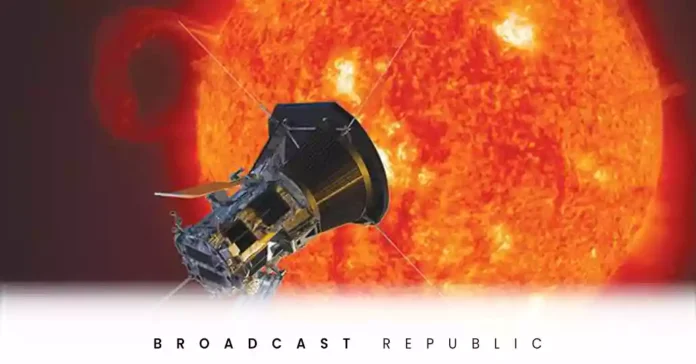In a monumental feat of space exploration, NASA’s Parker Solar Probe, launched in 2018, is gearing up for an unprecedented mission that will take it closer to the Sun than any human-made object has ever ventured. Set to achieve a historic flyby on December 24 of the upcoming year, this audacious probe is racing through space at an astonishing speed of 195 km/s, or 435,000 mph.
Described by Dr. Nour Raouafi, the project scientist, as “almost landing on a star,” the Parker Solar Probe’s mission is nothing short of groundbreaking. Its goal is to make repeated, progressively closer passes of the Sun, with the upcoming maneuver bringing it within 6.1 million km, or 3.8 million miles, of the Sun’s surface – a mere 4% of the Sun-Earth distance.
This daring approach is not without its challenges. At its closest point, the probe will endure temperatures reaching a scorching 1,400°C due to the Sun’s intense gravitational pull. To withstand these extreme conditions, the Parker Solar Probe employs swift in-and-out movements, utilizing a suite of instruments behind a robust heat shield to make crucial measurements of the solar environment.
The primary objective of this audacious mission is to unravel the mysteries of the Sun’s outer atmosphere, known as the corona, where temperatures unexpectedly soar to over a million degrees. The counterintuitive superheating and the acceleration of charged particles within the corona remain enigmatic phenomena that scientists hope the Parker Solar Probe will decode. The data collected is anticipated to provide essential insights for improving solar behavior forecasts and enhancing our understanding of “space weather.”
As the Parker Solar Probe reaches its apex in the coming year, with close approaches and an extended sojourn in the corona, researchers anticipate groundbreaking discoveries about solar processes. The historic flyby on December 24 offers a unique opportunity to study potential waves in the solar wind associated with the heating phenomenon. Although the probe won’t get any closer to the Sun after December, the data amassed during this mission is expected to significantly contribute to our understanding of the Sun and its impact on space weather, with implications for future lunar exploration and human presence beyond Earth.

